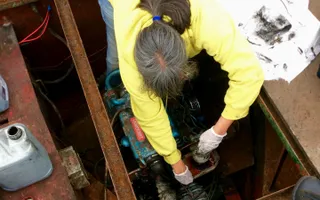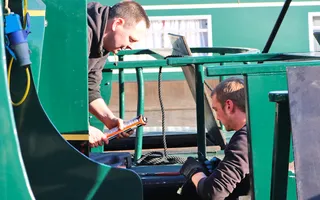When storing fuels in any environment, a water build-up is highly likely; particularly in the leisure marine industry where a low fuel turnover rate coupled with the realities of cruising almost guarantees this happening. The only question is how much water is in there?
Luckily, most vessels have installed a 'last line of defence'- this makes sure water does not reach vital components and warns of the issue before any damage is caused. These 'last line of defence' components have multiple names such as sedimentor, agglomerator, cav-filter and pre-filter, however the one common denominator is that they all remove water from the fuel before it reaches the engine.
Due to the nature of their role, they need regular maintenance in the form of draining and checking the water content. Note - if water is present every time they are checked, it is a sure sign the tank needs maintenance.
How to check your filters
Check your water ‘filters' by unscrewing the drain plug and seeing what escapes. All water separating filters have a drain plug on the bottom which is detailed in the following images.
Draining water from the filter will not affect the engine and once you've done this, you do not need to ‘bleed' the fuel system. You will need a container such as an old margarine tub or small plastic tray to catch the drained fluid, simply place it underneath the filter and loosen the drain plug. Don't remove it completely as things will get messy.
Allow fuel to flow/drip into the tray until there is a small puddle in the tray. At this point you should close/tighten the drain plug and inspect the liquid. If it is clean red diesel (blue or green if from an automotive source) the check is complete. If there's water, slime or debris, loosen the plug again and wait until clean fuel flows into the tray. If water/debris is present, re-check in three to seven days.












